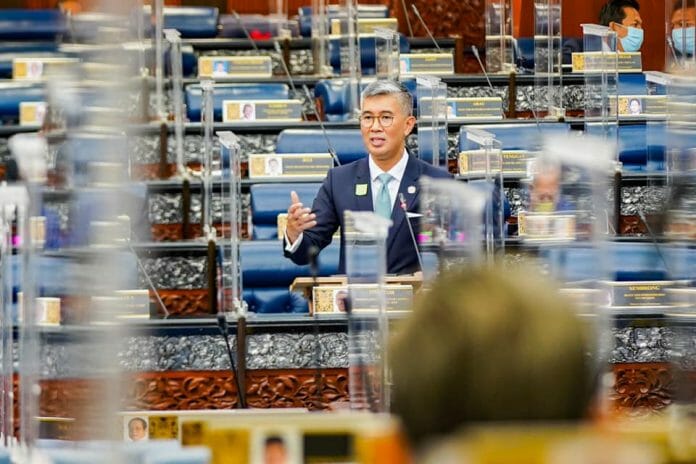As anticipated, the Budget 2022 presented to Parliament on October 31, 2021, remains strongly expansionary with a record allocation of RM332.1 billion (Budget 2021: RM322.5 billion), says Ram Ratings.
Operating expenditure (OPEX) and development expenditure (DEPEX) comes in higher at RM233.5 billion and RM75.6 billion (2021 estimates: RM219.6 billion and RM62.0 billion). Meanwhile, the COVID-19 Fund allocation has been slashed to RM23.0 billion from 2021’s revised estimate of RM39.0 billion (original estimate: RM17.0 billion).
“In line with improving economic conditions, government revenue is envisaged to grow by 5.9% to RM234.0 billion in 2022. The government is targeting a smaller budget deficit of 6.0% of GDP for 2022 (2021 estimate: 6.5%) on the back of higher projected growth of between 5.5% and 6.5%. We see the downside risks of the budget deficit forecast to include pandemic uncertainties, the upcoming general election and the external sector,” Ram Ratings says.
“It is heartening to note that the allocation of RM75.6 billion for gross DEPEX is the highest amount ever allocated and is also aligned with the RM400 billion DEPEX allocation under the recently announced 12th Malaysia Plan (12MP).
“We laud the government’s efforts in addressing the here-and-now needs of the rakyat. With this in mind, the government’s focus appears to remain tightly on economic recovery efforts given that the economy is still in recession. Notwithstanding this, the government must start addressing underlying structural issues as soon as possible to prepare the ground for strategic economic resetting as set out in the 12MP.”
Nevertheless, it says concerns over Malaysia’s narrow tax base following the replacement of the Goods and Services Tax (GST) with the Sales and Services Tax (SST) in 2018 have become more urgent.
Following the reversal, direct tax rates did not go up to pre-GST levels when the indirect tax base went down. Meanwhile, the strategy of relying on contributions from state-owned enterprises and other peripheral taxes — such as the one-off prosperity tax in 2022 — to plug deficits is unsustainable yet blunt. Note that these strategies could be prolonged for political reasons amid the looming general election.
To sustain growth, Malaysia must, first and foremost, reposition itself as an attractive investment destination vis-à-vis its regional peers. However, technology adoption and skills shortage continues to be major concerns. It is important to note that Budget 2022 assumes a business-as-usual scenario for international trade. Given the present crisis, continuous improvements in net exports in supporting Malaysia’s overall economic growth is paramount.
“Thus, it is not surprising that the government raised the COVID-19 Fund ceiling to RM110 billion from RM65 billion to fund its economic stimulus packages and recovery plan. This is crucial as the number of Malaysians that have become economically and socially vulnerable will likely remain elevated. For instance, the unemployment rate remains high (August 2021: 4.6%). The government, however, expects the unemployment rate to improve to 4.0% in 2022 with the help of, for example, the JaminKerja programme.”
It is important to note that the COVID-19 Fund is a dedicated trust fund where the proceeds of borrowings needed to finance the additional expenditure on pandemic relief measures are channelled. If the RM110 billion of the COVID-19 Fund ceiling is fully drawn down, it could add 6.7 percentage points to the federal government’s total direct debt in 2022 (2020: 62.1% of GDP). Since the COVID-19 Fund is not meant to fund economic expansion, it will be a burden that will be borne largely by future generations. As such, this is a concern we should all not lose sight of.
Given the unprecedented borrowings to fund crisis spending, we do not foresee the debt ceiling returning to the pre-pandemic level of 55% of GDP following the expiry of Temporary Measures for Government Financing (Coronavirus Disease 2019) by the end-2022.
“We believe the Ministry of Finance will either use the proposed Fiscal Responsibility Act or amend existing laws through administrative means to keep the debt ceiling at the current 65%. This would, in other words, allow for the subsequent positioning of the COVID-19 Fund as part of statutory debt under the national budget. If Malaysia’s narrow tax base continues to be an issue, we foresee the nation’s fiscal position deteriorating further and faster.”









